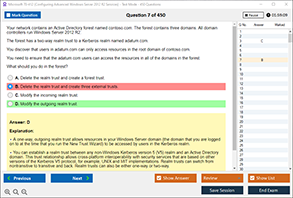The Open Systems Interconnection (OSI) model is a conceptual framework that standardizes the communication functions of a network. It divides the communication process into seven distinct layers, each with its specific functions. The OSI model is essential for understanding the relationship between various network protocols and how devices communicate over a network.
One critical layer of the OSI model is the Physical Layer, which is responsible for the transmission of raw data over physical mediums. When it comes to microwave transmissions, the physical medium used for communication is of particular interest. In this article, we will explore the OSI Physical Layer's term that describes the physical medium for microwave transmissions, along with related concepts, applications, and examples.
Understanding the OSI Physical Layer
Before diving into the specifics of microwave transmission, it's important to understand the role of the Physical Layer in the OSI model. This layer deals with the actual transmission of data over physical media, including cables, fiber optics, and wireless signals. It encompasses all the hardware-related aspects of network communication, such as cables, switches, antennas, and radio frequencies.
The Physical Layer defines how bits are transmitted over the network and dictates the electrical, optical, or radio signals used for communication. This layer handles issues such as signal encoding, modulation, transmission speed, and physical medium type.
Key Functions of the OSI Physical Layer:
- Bit Representation: It converts digital data into electrical, optical, or radio signals for transmission.
- Signal Transmission and Reception: It manages the sending and receiving of data signals.
- Medium Type: It defines the physical medium used for communication, such as copper wires, fiber optics, or wireless frequencies.
- Data Rate Control: It establishes the data rate or speed at which data is transmitted.
What is Microwave Transmission?
Microwave transmission refers to the use of high-frequency radio waves (typically in the gigahertz range) to carry data over long distances. This form of wireless communication is often used in telecommunications, including satellite communications, mobile networks, and point-to-point links.
Microwave transmission involves sending data over the air in the form of electromagnetic waves. These waves travel through the atmosphere, often using line-of-sight communication, meaning the transmitter and receiver need to be in direct visual contact. The use of microwave frequencies allows for high-speed data transfer over large distances, making it ideal for long-range communication.
What OSI Physical Layer Term Describes the Physical Medium for Microwave Transmissions?
The term that describes the physical medium for microwave transmissions in the OSI Physical Layer is Radio Frequency (RF).
Why is RF the Physical Medium for Microwave Transmission?
Radio Frequency (RF) refers to the range of electromagnetic frequencies that are used for wireless transmission, including microwave frequencies. RF waves are used to transmit signals through the air, and microwave transmission specifically operates at frequencies typically between 1 GHz and 300 GHz. These high-frequency signals allow for high-speed data transmission over long distances with minimal interference.
In the context of the OSI Physical Layer, RF is the medium through which data is transmitted in the form of microwave signals. It serves as the physical medium for communication in systems such as satellite links, Wi-Fi, cellular networks, and microwave relay systems.
How Does RF Work in Microwave Transmission?
RF signals are transmitted using antennas that convert electrical signals into electromagnetic waves. These waves travel through the air and are received by another antenna, where they are converted back into electrical signals for further processing. The RF spectrum is divided into various frequency bands, each with its characteristics and uses, including:
- L-band (1-2 GHz): Often used for satellite communications.
- S-band (2-4 GHz): Common in radar systems and some communication satellites.
- C-band (4-8 GHz): Used for television broadcasting and weather radar systems.
- Ku-band (12-18 GHz): Used for satellite communications.
- Ka-band (26.5-40 GHz): High-frequency band for high-capacity satellite communications.
Microwave Transmission Applications
Microwave transmission is widely used in many telecommunications and broadcasting systems. Some common applications include:
- Satellite Communications: Satellites use microwave frequencies to transmit signals between Earth stations, providing communication for television, radio, and internet services.
- Point-to-Point Communication Links: Microwave relay towers use high-frequency RF signals to transmit data between two locations over the air, without the need for physical cables.
- Mobile Networks: Cellular networks use microwave transmission for communication between cell towers and backhaul connections.
- Radar Systems: Microwaves are used in radar technology for detecting objects and measuring distances.
Advantages of Microwave Transmission
- High Data Transfer Rates: Microwave signals can carry large amounts of data, making them suitable for high-speed communication.
- Long Distance Communication: Microwave transmission is effective over long distances, especially with the help of satellite systems.
- Wireless Communication: Microwaves eliminate the need for physical cables, making it easier to set up communication systems.
Challenges of Microwave Transmission
- Line-of-Sight Requirements: Microwave transmission typically requires a direct line of sight between the transmitter and receiver, which can be affected by obstructions such as buildings, trees, or mountains.
- Weather Sensitivity: Severe weather conditions, such as heavy rain or thunderstorms, can interfere with microwave signals, leading to signal degradation or loss of communication.
- Interference: RF signals can suffer from interference due to other radio transmissions or electromagnetic noise.
Conclusion
The OSI Physical Layer is fundamental to understanding how data is transmitted over networks. When it comes to microwave transmissions, Radio Frequency (RF) is the physical medium that enables the communication of data using high-frequency electromagnetic waves. Microwave transmission plays a critical role in many modern communication systems, including satellite communications, mobile networks, and point-to-point links. By understanding the OSI Physical Layer's role in this process, network engineers and telecommunications professionals can optimize the use of microwave transmission for reliable and high-speed communication.
Sample Questions on Microwave Transmission and the OSI Physical Layer
Question 1:
Which term describes the physical medium for microwave transmissions in the OSI Physical Layer?
a) Fiber Optic
b) Radio Frequency (RF)
c) Twisted Pair
d) Coaxial Cable
Answer: b) Radio Frequency (RF)
Question 2:
What is the typical frequency range for microwave transmission?
a) 100 MHz to 1 GHz
b) 1 GHz to 300 GHz
c) 300 MHz to 1 GHz
d) 300 GHz to 1 THz
Answer: b) 1 GHz to 300 GHz
Question 3:
Which of the following is NOT a common application of microwave transmission?
a) Satellite communications
b) Point-to-point communication links
c) Radar systems
d) Ethernet over copper cables
Answer: d) Ethernet over copper cables
Question 4:
What is one major challenge of microwave transmission?
a) Requires a large amount of physical cabling
b) Affected by weather conditions
c) Works well without the need for antennas
d) Low data transfer rates
Answer: b) Affected by weather conditions



